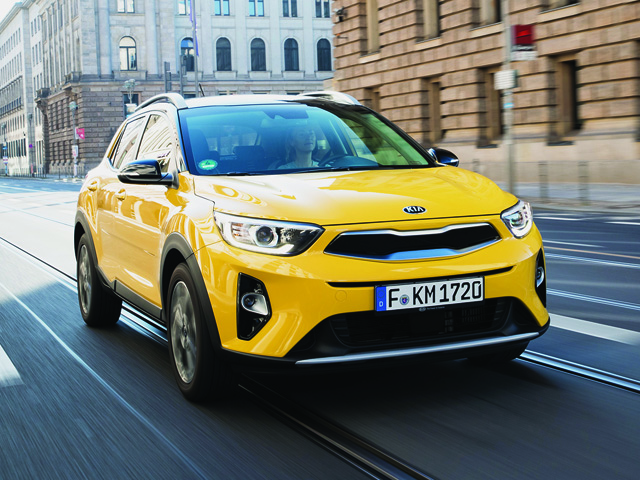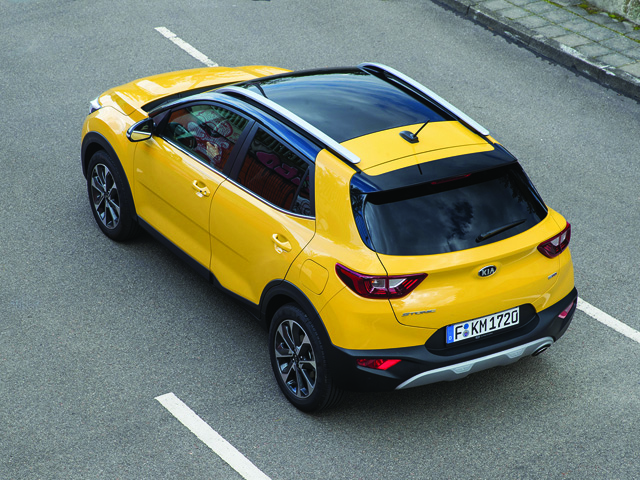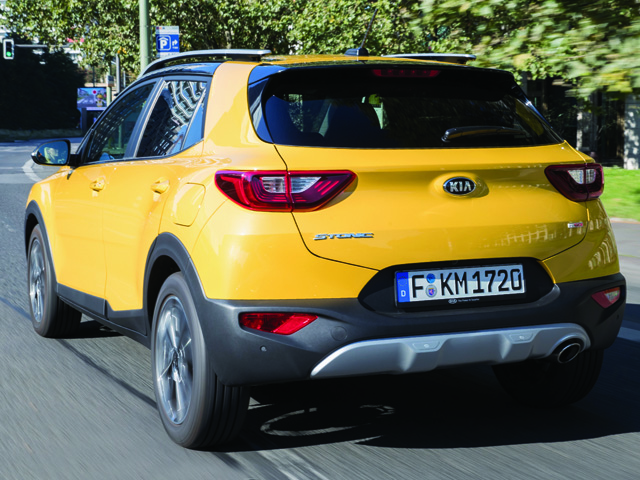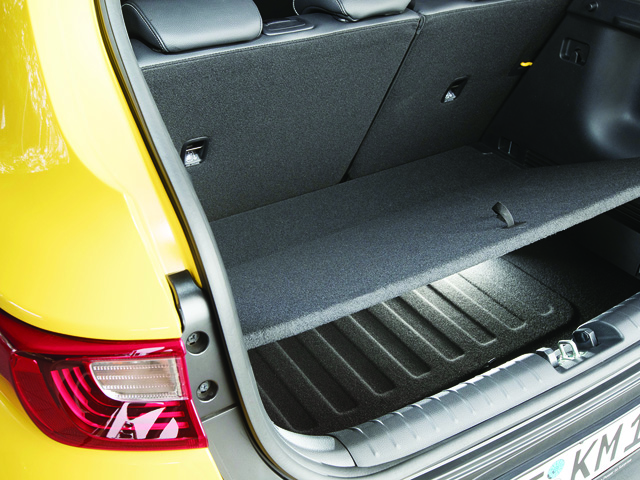Road Test: Kia Stonic
The Stonic gives Kia a conventional sub-Sportage crossover, at last, explains Alex Grant.
SECTOR Crossover PRICE €16,000-€26,000 FUEL 4.2-5.5l/100km CO2 109-125g/km
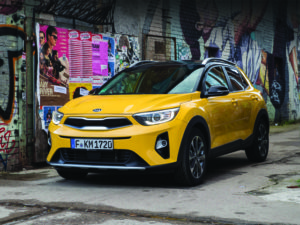
Kia Stonic
When you consider how successful the Sportage has been for Kia – not only in terms of outright sales but also for brand exposure – the gap in the line-up for a smaller crossover has taken a while to fill. That’s something the Stonic will rectify.
The launch of this car is a step into the conventional; a better fit for customers’ design expectations than the square peg in a crossover-shaped hole that is the Soul, and without the cost of the hybrid system in the clever but high-tech Niro. It’s an important niche to fill, one expected to account for around 100,000 sales a year across Europe during its lifetime, without cannibalising volume from other models. That’s roughly a 20% uplift.
The foundations are good; the platform is shared with the new Rio, but it’s longer, taller and offers 42mm of extra ground clearance. It’s a handsome compact crossover, less challenging than the Sportage but with an obvious styling link at the back, while there’s a hint of Soul in the headlights. Chunky shoulderlines, relatively large wheels and plenty of bold colour options, with the ability to spec a contrasting roof, bode well in a segment where styling is a priority.
Crossover customers tend to opt for higher-specced versions and that’s reflected in the standard equipment. All include 17-inch alloy wheels, and a 7.0-inch touchscreen with Android Auto and Apple CarPlay, the latter upgraded to include TomTom navigation on higher trims, and the entire range is priced under the entry-level Niro.
With limited demand for four-wheel drive in this segment, Kia won’t offer it. But there are petrol and diesel options for fleets. The 109hp 1.6-litre diesel comes in at 109g/km, which is competitive, though it’s quite a grumbly engine in the Stonic and performance isn’t as lively as you might expect. It’s more appealing with the 1.0-litre turbocharged petrol, which delivers its 120hp with more gusto and less noise. Lower pricing and 115g/km CO2 emissions mean it’s not a huge leap for drivers, though there is a 20% increase in fuel consumption to factor into whole-life costs. Entry-level petrols with 1.2 and 1.4 litres are also available, but better tuned to cost-conscious retail buyers.
It’s a decent car to drive with either engine. European versions get a region-specific chassis setup, so it handles neatly despite the raised ride height, without resorting to overly stiff suspension or steering that’s too sensitive at high speed. The Ceed is a better highway car, but only just.
There are some compromises for those athletic looks. Although it’s almost identical in footprint to the Soul, the Stonic offers less shoulder room for passengers in both rows, and less leg room in the back. Boot space below the load cover is almost identical, and slightly less than you’d get in a Ceed, though the Soul’s flat roof and upright tailgate give it the edge as a load-mover.
Sales volumes should prove that’s not a huge priority in this segment, though, and the usual dual-level floor and two-piece folding bench mean there’s enough flexibility when needed. There’s still room for adults in both rows, and though there’s an abundance of hard shiny plastics dotted around, accents of colour and that large touchscreen mean it doesn’t feel drab inside, like some versions of the Rio.
This is a fast-growing segment, in part because the Stonic is one of many newcomers on the way. But, like the Sportage, this is good value, looks sharp and drives well, which should bode well for luring yet more new customers into dealerships.
Fleet fact
This segment is expected to be 10% of the European market by 2020.
Highlights
- Lively 1.0-litre petrol turbo engine consumes 5.0l/100km with 115g/km CO2.
- Android Auto and Apple CarPlay across the range.
- Bold colours and contrasting roof options.
What we think
A competitive offer for a booming segment. However, automatic versions would be a worthwhile add-on to keep customers from opting into one of its many competitors.
- Kia Stonic
- Kia Stonic
- Kia Stonic
- Kia Stonic
- Kia Stonic
- Kia Stonic


